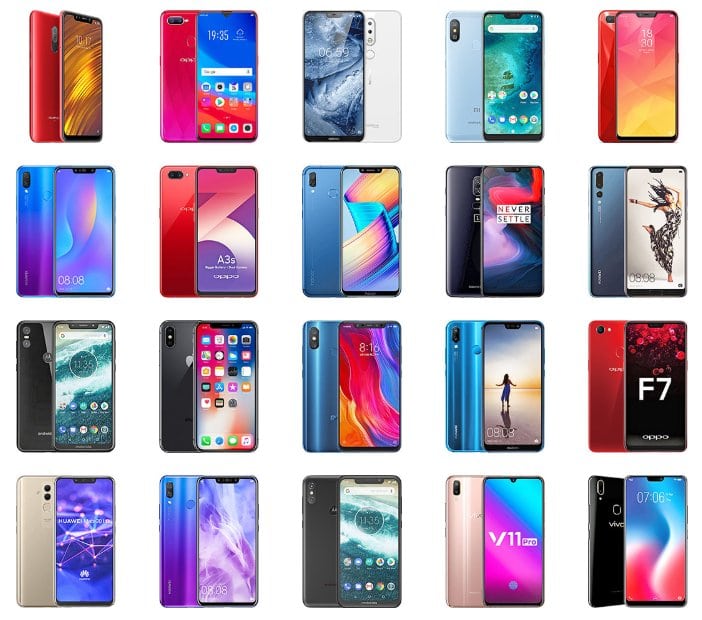Despite no longer being a hyper-growth category, smartphones are still a fascinating category to study. Not only because of the unprecedented impact they have on enabling humans of all shapes and sizes, races, and economic circumstances to engage in personal computing but also because of the global competitive strategies.
In what was an entirely predictable set of events, nearly every smartphone manufacturer has embraced Apple’s iPhone X Notch design. In just a year, we went from a single phone with a notch in the screen to know an estimated over 60.
What was once criticized as a fundamental flaw in design, has created a surplus of Notch designs including the rumored Google Pixel 3? Now, while many of those Notch-based designs are questionable implementations of the technology and most don’t use the space to add any real value. It is worth pointing out that the few that are implementing a sophisticated camera system in that area demonstrate that the notch based design is, at the moment, the only way to implement a sophisticated front-facing camera system and still offer as much screen real-estate as possible.
Apple’s design was highly criticized, with many saying keep the bezel and spread the camera system out. The problem with that logic is given the complexity of some of the logic and image sensors to be in close proximity to function correctly, and this was not feasible. Essentially, the point I made when I first analyzed Apple’s implementation still rings true. The notch is the trade-off for the use case and camera system functionality. It’s either get a sophisticated camera system and a notch or don’t get it and have a small bezel. I think the tradeoff is worth it until the technology can be miniaturized further and fit into a much smaller space.
There is another part of the Notch design wars equation worth mentioning. Diving deeper on the point that some designs are blatant design copies simply for the sake of having a notch and not adding any value. The copying of the Notch in emerging markets is the observation to note. This is a broad point about companies that copy Apple’s designs almost perfectly as it is more relevant in emerging markets.
Everyone can’t afford an iPhone. Realistically, the iPhone will be out of reach pricing wise for much of the world’s population. However, Apple’s brand remains strong, and while consumers can’t afford Apple’s premium innovations, many smartphone vendors can offer the perception of those premium innovations and design at lower prices. Of course, the materials, build quality, and underlying technology will not be as good as Apple’s, but for consumers for whom $100 or even $300 is the max, they can spend they will consider them good enough.
In emerging markets, using a known brands design language is a proven strategy to generate sales. Whether it is sustainable is another question. However, for the time being, “looking like Apple” is an emerging market strategy the competition will keep using. The other is trying to be first, and that leads us to foldable displays.
The Claim to First
Many competitors are going to race to foldable and bendable displays so they can lay their claim to being first. There has been a great deal of smoke around Samsung looking to lead the market with a foldable display and management seems to have now confirmed this as well.
The good thing for Samsung is showing a foldable will have many benefits. It will generate a significant amount of media. It will also cement their position as being first with a market plan to come to market with a foldable device. No matter who comes out with a foldable after Samsung shows it, and people will always remember Samsung as being first. Sadly, in the long run being first is irrelevant but for Samsung, this is also a showcase of their display division which is becoming one of the most significant drivers of revenue for their components division.
I do have a hunch that the Chinese OEMs will look to bring foldable displays to the market as fast as possible and at extremely low prices. It is likely there will be a slew of foldable displays (some not great) at a variety of prices on the market before Apple ever releases one (or if they do).
The market has demonstrated a desire for as large of a smartphone screen as possible that still fits in a pocket or purse. This is why I’m convinced there is a market for foldable/bendable screens because having a smartphone in your pocket that can expand out to a 10″ screen seems like a winning value proposition when it is done correctly. The technology is rapidly approaching to make this scenario a reality, and it is unlikely Apple does it any time soon which means competitors will move as fast as they can to be there first.
Being first is the other way competition tries to gain mindshare over Apple, and as Phablets proved it works for a while but runs, it’s course if and when Apple decides to enter the market with a similar solution.
Copying and trying to be first will remain the Apple’s competitors main tactics because they work, at least for a little while. Moreover, in an era where Android brands are fighting tooth and nail for every bit of market share they can, you can bet they will do everything they can to fight this battle.
